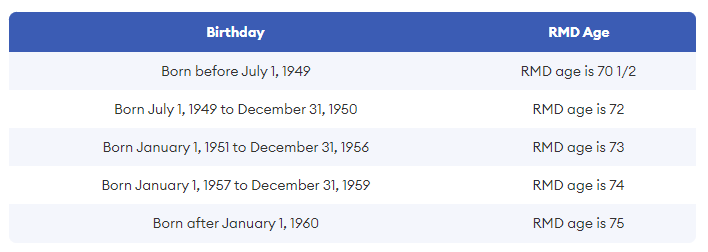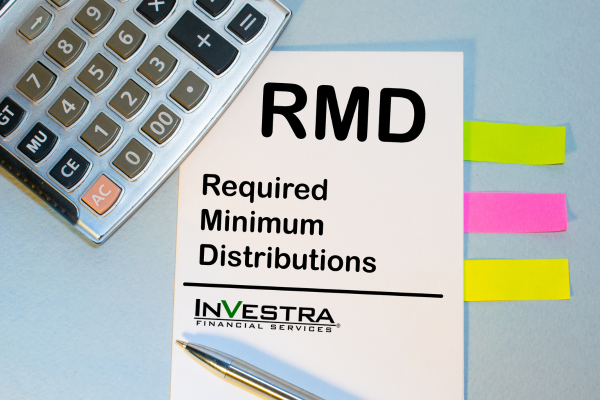For investors that have been blessed to have accumulated wealth in IRAs or 401(k)s, it’s crucial to be familiar with required minimum distributions (RMDs), especially if you don’t have access to a Wealth Management Professional. RMDs can have a significant impact on your retirement savings strategy, so understanding the rules and planning ahead is crucial. In this article, we will provide with valuable information on building retirement savings with RMDs in mind.
What are RMDs?
Required minimum distributions (RMDs) are the IRS-mandated withdrawals that retirees must take from their tax-advantaged retirement accounts, such as traditional IRAs and 401(k)s, once they reach a certain age. The purpose of RMDs is to ensure that individuals begin to withdraw and pay taxes on their retirement savings, as these accounts have enjoyed tax-deferred growth throughout their working years.
How to Calculate RMDs
Calculating your RMDs involves determining the distribution amount based on your account balance and life expectancy. The IRS provides tables to assist with these calculations. To estimate your RMD, divide the account balance of all your tax-deferred retirement accounts by your life expectancy factor. It’s crucial to recalculate your RMD annually, as the distribution amount will change as you age and your account balance fluctuates.

How Do You Take RMDs?
The best way to take RMDs depends on your specific financial situation and retirement goals. You have the flexibility to withdraw the entire RMD amount in a lump sum or receive it in equal distributions throughout the year. Discussing your options with a financial advisor can help you determine the most suitable approach based on your tax situation, cash flow needs, and investment strategy.
Be Careful! Uncle Sam Can Punish You if You Get Your RMD Wrong
Failing to take your RMDs on time or withdrawing less than the required amount can result in hefty penalties. The IRS imposes a 50% tax penalty on the difference between the actual distribution and the required amount. To avoid this penalty, it is crucial to stay informed about the RMD rules, calculate your distribution accurately, and ensure timely withdrawals.
Can You Avoid Them?
While RMDs are mandatory for most retirement accounts, there are strategies to help mitigate their impact or explore alternative options:
- Donating to Charity with a QCD: Qualified Charitable Distributions (QCDs) allow you to donate your RMD amount directly to a qualified charity, which can provide tax advantages and reduce your taxable income.
- Using the Still-Working Exemption: If you are still working at age 72 or beyond and participate in an employer-sponsored 401(k) plan, you may be eligible for an exemption from RMDs until you retire.
- Delaying RMDs with a QLAC: A Qualified Longevity Annuity Contract (QLAC) enables you to defer RMDs by investing a portion of your retirement savings in an annuity that begins payouts at a later age, typically up to age 85.
- Avoiding RMDs with a Roth Conversion: Converting traditional retirement account funds to a Roth IRA can eliminate RMD requirements. However, this strategy requires careful consideration of the tax implications and suitability for your financial situation, so you should consult a Wealth Management professional if this particular strategy is something you’d like to consider.
- Saving Your RMDs in a Roth IRA: If you have a Roth IRA and don’t need your RMD funds for living expenses, you can let them continue growing tax-free by transferring the RMD.
No matter what, Uncle Sam will always get his share, it’s just a matter of when. Connect with a Wealth Management Professional to explore ways to minimize the potential headache of RMDs later in life.
Important Disclosures:
Investing involves risks including possible loss of principal. No investment strategy or risk management technique can guarantee return or eliminate risk in all market environments. The opinions voiced in this material are for general information only and are not intended to provide specific advice or recommendations for any individual security. To determine which investment(s) may be appropriate for you, consult your financial advisor prior to investing. There is no assurance that the views or strategies discussed are suitable for all investors or will yield positive outcomes.


